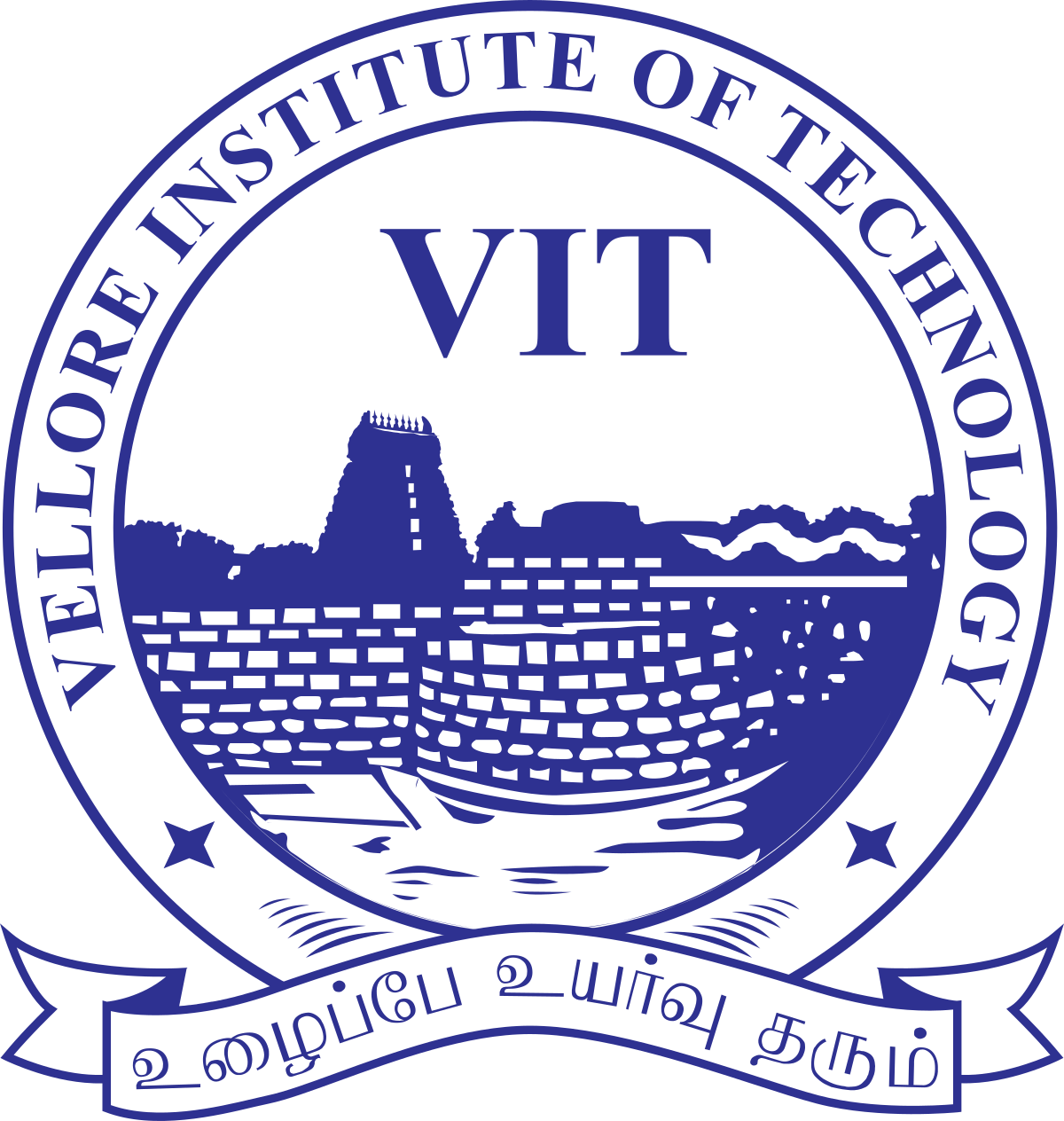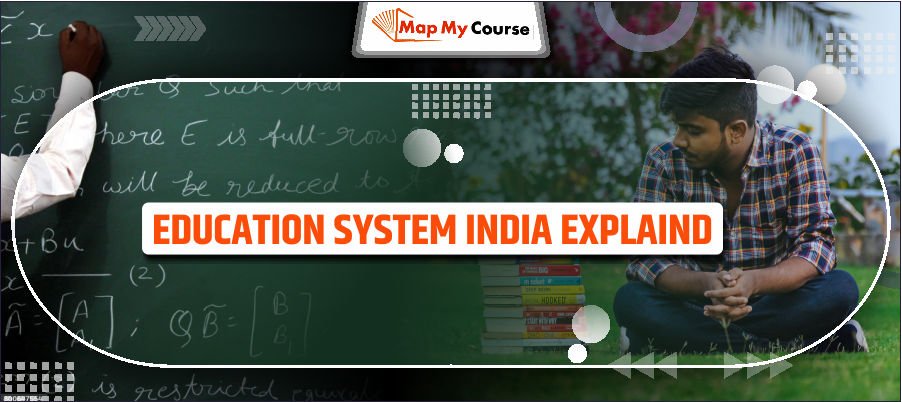Education plays one of the key roles in the growth of our country, but have you ever thought Indian education system works, from your very first day in school to college graduation? Almost everyone has gone through it, but only a few know about it in depth.
The education system in India is a structured setup that takes students from early schooling to college. It has various stages, including pre-primary, primary, secondary, and higher education, and is under the control of both central and state education boards.
In this blog, Education System in India we have explained the system is structured, who controls it, what issues it faces, and how it’s slowly evolving through new reforms and government initiatives.
What is the Education System In India?
The Indian education system has changed a lot over the years. Long ago, students learned in Gurukuls, where they lived and studied with their teachers. Later, during British rule, a more formal school system was introduced, which focused mostly on reading, writing, and exams.
Today, the system is much bigger and more organised. Millions of students study in schools and colleges across the country. It’s managed by both the central and state governments, and while there are still many challenges, like a lack of resources in some areas, things are slowly improving.
New policies and ideas are now focusing on making learning more practical, skill-based, and accessible to everyone.
How Is the Indian Education System Structured?
The education system of India is one of the largest in the world, which caters to a wide range of learners from different backgrounds. It usually follows a step-by-step model that starts from early childhood education and goes way to postgraduate studies and beyond.
Here’s how it usually works:
- Pre-primary education: This is the first level of education, which includes nursery, LKG, and UKG. It focuses on basic learning, play, and social skills for young children.
- Primary education: This level covers classes 1 to 5. This is where students start learning core subjects like languages, maths, and science.
- Upper primary or middle school: This level includes Classes 6 to 8. The subjects become a bit more detailed, and students are introduced to new topics.
- Secondary education: This level is about Class 9 and 10. These years are important because students prepare for their first board exams.
- Senior secondary education: This level includes Classes 11 and 12. Students choose a stream between science, commerce, or arts based on their interests and future goals.
- Higher education: This level of education begins just after Class 12. This includes college degrees like BA, BSc, BCom, engineering, medicine, and many more, followed by postgraduate and research-level courses.
Role of Government Bodies in Indian Education
The Indian government has taken many steps to improve education and make it accessible to everyone. One big move was the Right to Education (RTE) Act, which made school free and compulsory for children aged from 6 to 14 years.
Programs like Sarva Shiksha Abhiyan and Samagra Shiksha helped improve schools by adding classrooms, giving free books, meals, and training teachers. For higher studies, the government is continuously working on increasing the number of colleges and has started platforms like SWAYAM for online learning.
Recently, the New Education Policy (NEP) 2020 was introduced to make learning more flexible, practical, and skill-based. These efforts show how government bodies are working to improve education for all.
Current Issues in Education in India
- Too Much Focus on Rote Learning
In many schools, students are still expected to just learn the answers instead of understanding the topics properly. This kind of learning doesn’t help much in real life or build confidence in students.
- Lack of Job-Ready Skills
Many students finish their studies but still find it hard to get a job because schools and colleges often don’t focus on practical skills or job-related training.
- Outdated Curriculum
What students learn today in many schools hasn’t changed much in years. In a fast-changing world, they need to learn new skills and updated topics, but the system hasn’t noticed this problem.
- Shortage of Trained Teachers
Teachers are the heart of any school. But in many areas, especially rural ones, schools either don’t have enough teachers, or the teachers don’t get proper training to teach well.
- High Pressure from Exams
Board exams, entrance tests, and high marks—students go through a lot of stress. The pressure to score well can affect their mental health and make learning less enjoyable.
Challenges Faced by the Indian Education System
1. Growing Gap between Urban and Rural Education
Students in big cities often have access to good schools, smart classrooms and trained teachers, but in villages, we often find that many schools don’t have even the basic facilities like proper classrooms and clean toilets, which leads to a huge gap in learning.
2. Expenditure on education
The government doesn’t spend as much as it should on education. Because of this, many schools lack good buildings, learning materials, and well-trained teachers.
3. PPP model
The Public-Private Partnership model was started to improve schools by combining government and private efforts. But many of these projects don’t work well because they are not planned or managed properly.
4. Student-teacher ratio
In many schools, one teacher has to teach too many students. This means students don’t get enough personal attention, and learning becomes harder for everyone.
5. Accreditation and branding
Some private schools and colleges care more about their brand name or fancy buildings than actual teaching quality. They charge high fees but don’t always give students a good education.
6. Students studying abroad
Every year, many Indian students go to other countries for higher studies. This shows that they feel they can get a better education and opportunities outside India.
7. Infrastructure facilities
A lot of schools still don’t have basic things like clean toilets, drinking water, libraries, or science labs. Without these, it’s tough for students to study comfortably or enjoy learning.
Schemes & Campaigns to Boost the Education System in India
- Sarva Shiksha Abhiyan (SSA)
It was started in 2001, with a mission to make sure every child between the ages of 6 and 14 gets a chance to go to school. It helped improve existing schools, build new schools in remote areas, and provided free learning materials so that no child is left behind.
- National Programme for Education of Girls at Elementary Level (NPEGEL)
This program was created to support girls who are most likely to miss out on school, especially those in poor or rural areas. Its main focus is to reach girls who have never been enrolled or have dropped out, by giving them extra support to continue their education.
- Mid-Day Meal Scheme
This scheme provides free cooked meals to children studying in government and government-aided schools. Apart from fighting hunger, it has helped increase school attendance and encouraged children to stay in school, especially in areas where families struggle to afford daily meals.
- Rashtriya Madhyamik Shiksha Abhiyan (RMSA)
This program focused on improving access to secondary education (Classes 9 and 10). The goal was to ensure that students didn’t have to travel too far to attend school, especially in villages, and to increase the number of enrollment after Class 8.
- Scheme for Infrastructure Development in Minority Institutions (IDMI)
This scheme aims to support schools run by minority communities by helping them build better classrooms, labs, libraries, and other basic facilities. The idea is to give children from minority backgrounds a stronger educational foundation.
- Beti Bachao, Beti Padhao
This campaign was started to promote the value of the girl child and encourage families to educate their daughters. It focuses on reducing gender discrimination and improving the number of girls attending school and completing their education.
The Role Of NEP In Education System
The New Education Policy (NEP) 2020 is a big step toward changing how students in India are learning. It aims to make education more practical, flexible, and skill-based.
One of the major changes is the new 5+3+3+4 structure, which starts from age 3 and focuses on early learning. NEP also encourages learning in the mother tongue in the early years and focuses more on understanding concepts instead of just learning the facts.
It supports teaching skills like coding, critical thinking, and vocational training, and gives students more freedom to choose subjects or even take breaks during the college period. Overall, NEP is designed to make learning more useful, enjoyable, and future-ready for students across India.
Future Goals of Education In India
- Education for Every Child
One of the goals is to make sure that every child in India, despite their background, can attend school and get a quality education.
- More Focus on Skills and Job Training
Another goal is to teach skills that help in getting jobs, like computer work, crafts, designing, or running a small business on their own. In this way, students can learn some regular subjects as well as useful skills.
- Using Technology to Make Learning Easier
With the help of online classes, educational apps, and smart classrooms, students can learn at their speed and in a way that suits them best.
- Helping Students Think Better
Instead of just learning answers, students will be encouraged to think for themselves, ask questions, and adequately understand things.
- Learning to Solve Problems
Students will be taught how to face real-life challenges and find smart and practical solutions, whether it’s in school, at home, or in the workplace.
Check Out More Blogs
Last Thoughts
The education system in India has seen many changes over the past many years, and it’s still experiencing many changes. With steps like the New Education Policy and various government schemes, it focuses on making learning more meaningful, skill-based, and accessible to everyone.
But real improvement will happen only with time and teamwork. Schools, teachers, parents, and students all need to contribute to building a system that truly supports every learner.
If these efforts continue in the right direction, the education system in India can become stronger, more inclusive, and better prepared to shape the future of our country.
Frequently Asked Questions
Q1. What are the major challenges in India’s education system?
Ans. Some key issues are unequal access, poor infrastructure, lack of trained teachers, and a mismatch between education and job skills.
Q2. What is the government doing to improve education?
Ans. Schemes like Sarva Shiksha Abhiyan, Mid-Day Meal, and NEP 2020 aim to improve access, quality, and learning outcomes.
Q3. What is NEP 2020 and why does it matter?
Ans. NEP 2020 is a reform that makes education more flexible, skill-based, and focused on overall student development.
Q4. Why do Indian students go abroad for studies?
Ans. They seek better facilities, global exposure, and more opportunities in areas like research and career growth.
Q5. How is technology improving education in India?
Ans. Digital tools, online classes, and platforms like SWAYAM and DIKSHA make learning easier, flexible, and more accessible.


















